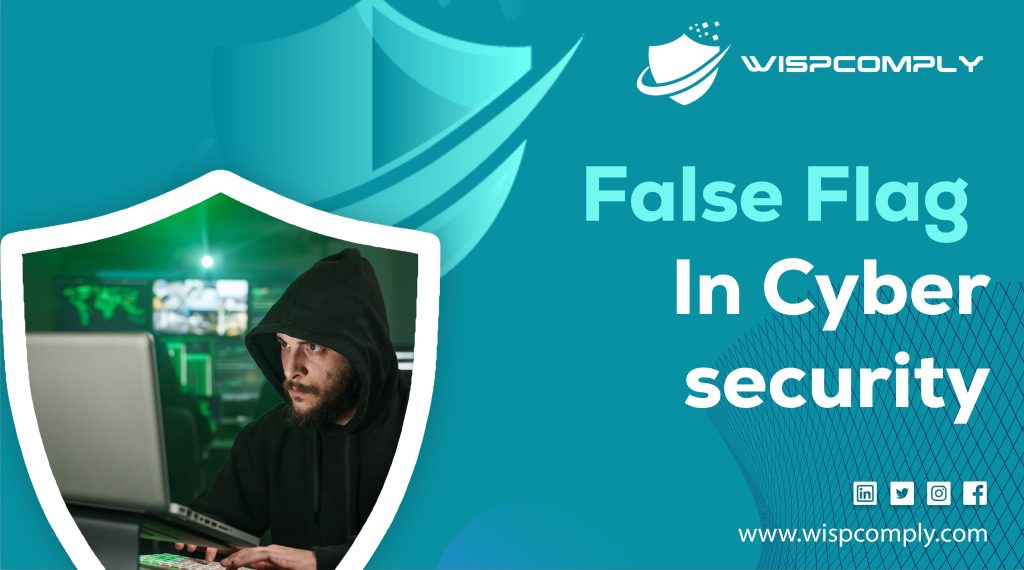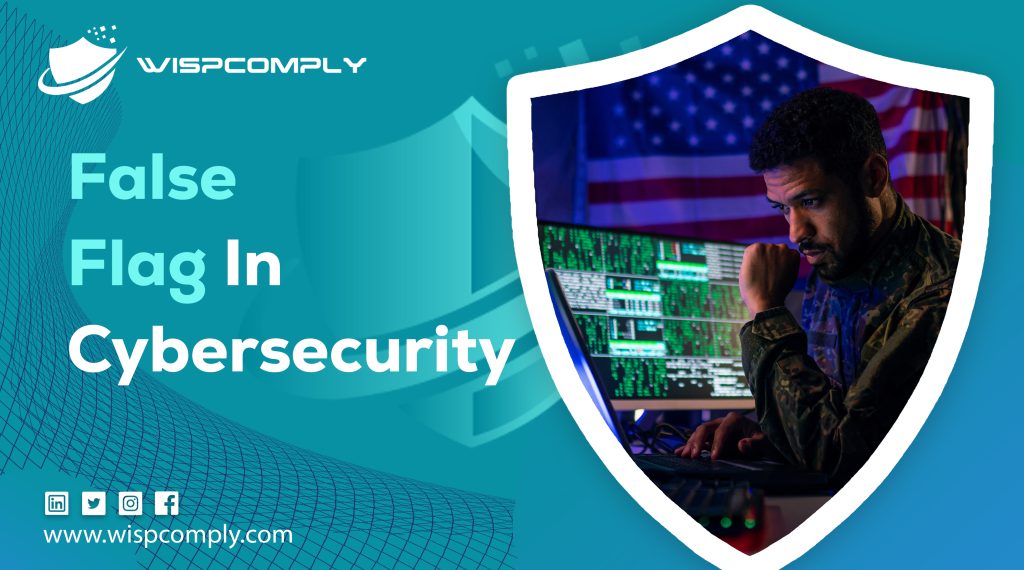
Table of Contents
What Is A False Flag In Cybersecurity?
Have you ever watched a spy movie where one country carries out an attack but leaves clues pointing to another? That’s a “false flag in cybersecurity” operation — a trick used for centuries in war and politics. For example, in history, armies have disguised themselves under enemy flags to confuse their opponents and shift blame.
Today, this old strategy has moved into the digital world. Hackers and cybercriminals now use false flags to mislead investigators, governments, and security teams. In cybersecurity, a false flag happens when attackers make their activities look like they came from someone else.
Understanding false flags in cybersecurity is crucial. Without it, organizations could blame the wrong group, miss the real threat, or even spark international conflict. Let’s dive deeper into what a false flag is, why attackers use it, and how analysts work to uncover the truth behind these deceptive attacks.
What Is a False Flag in Cybersecurity?
In simple words, a false flag in cybersecurity is a trick where attackers hide their true identity and make it look like someone else is responsible. Instead of showing their real “digital fingerprints,” they plant evidence pointing to another group, country, or hacker.
This is very similar to real-world false flag operations, like when a country disguises its soldiers as the enemy to spark conflict. In the cyber world, hackers do it by reusing code, using foreign servers, or even dropping fake clues in different languages.
Why go to such lengths? Because cybercriminals and nation-state hackers want to confuse their victims, create chaos, and avoid being caught. If investigators blame the wrong group, the attackers win.
Why Do Attackers Use False Flag Operations?
False flags aren’t random — they serve clear goals. Here are the main reasons attackers use them:
- Misdirection – To shift blame and avoid retaliation. If a company thinks another hacker group is responsible, the real attacker stays hidden.
- Geopolitical Manipulation – Nation-states may use false flags to create tension between rival countries. Imagine the political damage if one nation is falsely blamed for cyberattacks.
- Psychological Warfare – Planting doubt is powerful. By framing another group, attackers cause confusion and distrust among governments and security teams.
- Evading Detection – Cybercriminals often copy the tactics of well-known groups so their own profile remains unclear.
Who Commonly Uses False Flags in Cyber Attacks?
Not every hacker uses false flags, but several groups rely on them heavily:
- Nation-State Actors (APT Groups): Governments use Advanced Persistent Threat (APT) groups to spy, disrupt, or sabotage. Russian, Chinese, North Korean, and Iranian hackers are often linked to false flag attacks.
- Cybercriminals: Ransomware gangs may disguise themselves as political hackers to avoid direct blame.
- Hacktivists: Groups like Anonymous sometimes use false flags to push their agendas or confuse rivals.
- Insider Threats: Even employees can stage false flags, making it look like outsiders are responsible for data breaches.
What Are the Most Notable False Flag Cyber Attacks?
History is full of famous false flag cyber events. Some of the biggest include:
- Olympic Destroyer (2018 Winter Olympics): First blamed on North Korea, but later linked to Russia.
- Operation Aurora (2009-2010): Chinese hackers used tricks that mimicked other cyber groups.
- False Flag Ransomware Attacks: Criminals often copy Russian or North Korean malware to mislead investigators.
- Stuxnet (2010): This highly advanced attack on Iran’s nuclear program hid its origins before finally being traced to the U.S. and Israel.
How Do Attackers Stage a False Flag Cyber Operation?
Cyber attackers don’t just hope investigators will get confused — they carefully plan their deception:
- IP Spoofing & Geographic Misdirection: Routing attacks through foreign servers to fake location data.
- Code Borrowing & Tool Reuse: Using malware already linked to well-known threat groups.
- Linguistic & Cultural Clues: Deliberately leaving notes or code in another language to throw off suspicion.
- Timing & Attack Patterns: Copying another group’s usual working hours or schedules.
What Techniques Do Analysts Use to Detect False Flags?
Uncovering the truth is tough, but cybersecurity experts have developed methods to cut through the noise:
- Behavioral Analysis: Studying tactics, techniques, and procedures (TTPs) to spot inconsistencies.
- Forensic Artifacts: Examining metadata, code similarities, and digital footprints.
- Threat Intelligence Sharing: Teams share data worldwide to identify recurring tricks.
Attribution Challenges: Even with advanced tools, experts can still get it wrong. False flags are designed to confuse.

When Has False Flag Attribution Gone Wrong?
Mistakes happen, and they can have serious consequences:
- Misidentifying Groups: Sometimes ransomware gangs are mistaken for government hackers.
- Political Fallout: Wrong accusations have the power to escalate international tensions and damage diplomatic relations.
Which Industries Are Most Vulnerable to False Flag Attacks?
False flag operations target industries where confusion and chaos bring the biggest rewards:
- Government & Military: Prime targets for nation-state hackers.
- Financial Institutions: Criminals may disguise themselves as political hackers to mask theft.
- Critical Infrastructure: Power grids, healthcare, and transportation systems are high-risk targets.
- Media & Disinformation Campaigns: Hacktivist-style leaks can influence public opinion.
How Can Organizations Defend Against False Flag Attacks?
Defense is possible, but it requires smart strategies:
- Enhanced Threat Intelligence: Continuous monitoring of emerging threats.
- Deception Technology: Honeypots can expose hackers’ real intentions.
- Multi-Layered Attribution: Combining technical data, behavioral study, and human analysis for accuracy.
- Collaborative Defense: Sharing information with cybersecurity alliances like ISACs improves detection.
What Is the Future of False Flag Cyber Warfare?
As technology evolves, so do false flag operations:
- AI-Powered False Flags: Machine learning could help attackers mimic hacking styles more convincingly.
- Deepfake Cyber Attacks: Fake audio and video could be used in social engineering campaigns.
- Blurred Lines Between Crime & Espionage: Criminal groups are adopting tactics once exclusive to nation-states.
- Global Regulations & Treaties: The world is debating how to hold nations accountable for false flag in cybersecurity.
Conclusion
False flags are not just history lessons from wars of the past. Today, they are alive and well in the digital battlefield. A false flag in cybersecurity is a powerful weapon, allowing attackers to confuse, mislead, and avoid detection. From nation-states to cybercriminal gangs, false flags remain a top challenge for investigators and governments alike.
For organizations, the best defense is staying informed, building strong intelligence networks, and never rushing to blame without solid evidence. In a world where one false flag can spark political or financial chaos, awareness is the first step to security.
FAQs
1: What does “false flag in cybersecurity” mean?
It’s when hackers disguise their attacks to make it look like another group or country is responsible.
2: Why do attackers use false flags?
They use them to avoid detection, shift blame, and create political or organizational chaos.
3: Who uses false flag operations most often?
Nation-states, cybercriminals, hacktivists, and even insider threats.
4: What is an example of a false flag cyberattack?
The 2018 Olympic Destroyer attack, initially blamed on North Korea but later linked to Russia.
5: How do investigators spot false flags?
Through forensic analysis, behavior study, and global intelligence sharing.
6: Can false flags cause international problems?
Yes, misattributed attacks can increase tensions between countries.
7: How can companies protect themselves?
By using strong threat intelligence, deception tools, and collaborating with cybersecurity groups.
